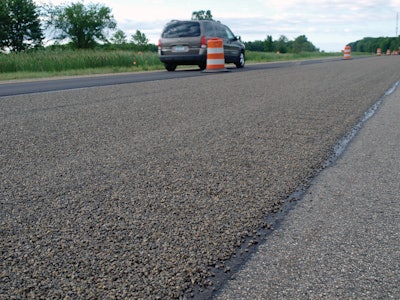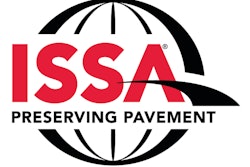
As it celebrates its 50th anniversary, the International Slurry Surfacing Association (ISSA) anticipates continued growth for pavement preservation in spite of the American Road & Transportation Builders Association’s (ARTBA) 2012 forecast for a six percent decline in the highway and bridge construction market. America’s highways are deteriorating because age and traffic volume have exceeded the original design of the roadways. Agencies are increasingly turning to pavement preservation because budgets are tighter than ever when considering the current state of the economy and the looming U.S. Highway Bill.
Pavement preservation processes, specifically those promoted by ISSA, including slurry and micro surfacing, chip sealing and crack treatment, stretch budgets by extending the life of a road up to seven years when applied at the proper time on structurally sound pavements. But many agencies are faced with budget constraints and an uncertain future, which limits their abilities to effectively utilize a pavement management program.
“Pavement preservation is a planned strategy,” states ISSA past president, Pierre Peltier. “Agencies can plan for a six-year budget better than they can a two-year budget. The timeline plays a huge role in agencies’ abilities to use the allotted funds most efficiently, which is difficult given the current economic uncertainty.”
The current pressure to use pavement preservation as a stop-gap measure is creating unrealistic expectations that can leave a community with a perception that pavement preservation processes fail. Pavement preservation processes should be applied over structurally sound pavements to extend their service life but with the current economic situation, agencies are taking a calculated risk by using these processes to try to hold the road together until they can afford to do more aggressive rehabilitative structural work. Because this is not the ideal use of the pavement preservation processes ISSA supports, ISSA recommends that agencies publish a statement that the surface treatment is being applied as a temporary measure for economical reasons.
To identify steps needed to address current gaps in pavement management programs, the Federal Highway Administration (FHWA) released the Pavement Management Roadmap (FHWA-HIF-11-011) last year. According to Chris Newman, P.E., Systems Preservation Engineer of the FHWA, there has been a change in FHWA thinking from that of the past when it promoted fixing the worst roads first using thick pavement overlays or total rehabilitation. The Pavement Management Roadmap is evidence of the new advocacy to keep good roads in good condition. Unfortunately, the public may see putting a surface treatment on a road that was paved in recent years as the agency wasting money. Regardless of the proper or improper use of pavement preservation processes, communicating realistic expectations about applied treatments with the public is important to maintain a positive reputation for the agency and pavement preservation.
In 2012, ISSA, in association with the Pavement Preservation & Recycling Alliance (PPRA), is developing a support system for direct educational programs and workshops. Comprehensive education on realistic objectives and proper application procedures help agencies restructure their pavement management programs to utilize their budget to its fullest extent. In the cases where it is necessary to use pavement preservation processes as a stop-gap measure, ISSA is educating agencies on the best ways to inform the public to avoid negative backlash. In addition to its other educational efforts, ISSA is working with FHWA to build a free online training webinar based on the ISSA inspector’s manual.



















